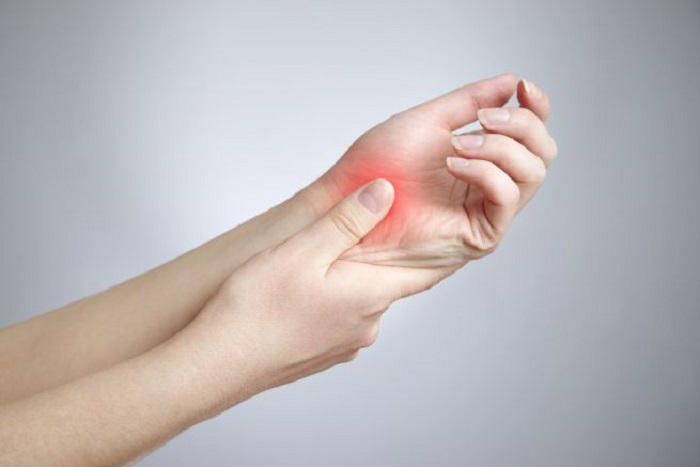Here is what are the possible causes of the pain in your hand, and how to deal with this annoying problem.
The hand pain can be caused by a variety of causes, including injury and illness, and to be able to identify the exact root cause of the problem, is undoubtedly essential to consult a doctor if the pain does not disappear in a short time. But what are the most common conditions that may cause this kind of trouble?

Possible causes of wrist pain and how to pass it
Wrist pain can have very different causes. To pass it definitely is important to identify them precisely.
Tendonitis: This condition can cause pain on the thumb side of the wrist, which can develop gradually or suddenly. Movements like making a fist, grasping or holding objects, rotate the wrist, can cause pain. To cure this problem, the doctor may recommend the use of a splint to rest the thumb and wrist, taking anti-inflammatory drugs and cortisone injections. Surgery is an option worth considering if your symptoms do not decrease.
Carpal tunnel syndrome: Causes pain in the palm of the hand and some fingers, but also in the wrist and forearm. This condition can cause symptoms such as weakness, tingling and numbness. Here you can find the causes and possible treatments of carpal tunnel syndrome.
Fractures: Can understandably cause severe pain in your hand, accompanied by stiffness, swelling and loss of motion. The treatment will be determined according to fracture in question.
You may also like to read another article on Natural-Lotion: Rheumatism, causes and natural remedies
Arthritis is a major source of pain in your hand, and can cause symptoms such as swelling and stiffness. Treatment depends on the severity of pain and disability, and may include administration of anti-inflammatory painkillers or analgesics, heat therapy or physical therapy.
Trigger finger: May cause severe pain, especially when you bend or straighten the affected finger. People most at risk are those who suffer from rheumatoid arthritis, gout and diabetes. To cure this problem, it will be helpful to rest, make a splint and perform rehabilitation exercises, while relieving the symptoms your doctor may advise taking pain medication. Surgery may be recommended in the event that the normal treatments should fail.



